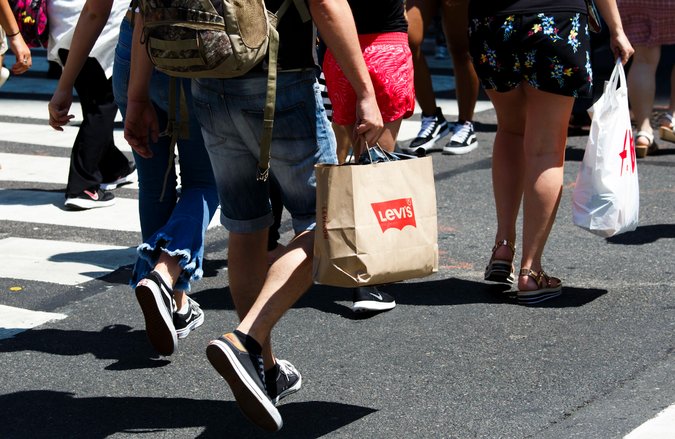Most economists are expecting the economy to expand at a rate of roughly 3 percent in the second half of 2017. That pace should be strong enough to keep job growth and wages on track for further gains, while keeping the threat of inflation modest for now.
Besides wild cards like Hurricane Harvey’s impact on a broad swath of the Gulf Coast, and political uncertainty about issues like tax reform and a possible increase in infrastructure spending, traders are also keeping an eye on the Federal Reserve.
Most experts believe the central bank will raise rates just once more this year, but a faster economy or an increase in wages or inflation could prompt policy makers to move more quickly to tighten monetary policy and shrink the Fed’s balance sheet in 2018.

The acceleration in spending also suggests that a so-called Trump Bump — improved sentiment among consumers and more optimism among business leaders — may be translating into concrete actions like homeowners buying new appliances and companies investing in new software or equipment.
“The consumer is in the driver’s seat in terms of economic growth,” said Scott Anderson, chief economist at Bank of the West in San Francisco. “It puts us on a stronger path going into the third quarter, although Hurricane Harvey introduces some uncertainty.”
Mr. Anderson expects growth in the range of 3 to 3.5 percent in the current quarter, but he said the hurricane could shave as much as 0.3 percentage points off that figure. A hit like that would mostly be reversed in the year’s final quarter as rebuilding efforts kicked in, he added.
Newsletter Sign Up
Continue reading the main story
Thank you for subscribing.
An error has occurred. Please try again later.
You are already subscribed to this email.
It will take more than one quarter’s data for the White House or congressional Republicans to be able to claim credit for lifting the economy’s growth trajectory. Under President Barack Obama in 2013 and 2014, quarterly growth occasionally exceeded 3 percent. But, in contrast to what happened during recoveries in the 1990s and mid-2000s, annual growth never passed that threshold.
If the economy were to sustain the current pace of expansion, it would be a significant uptick from the 2 percent annual growth rate that has mostly prevailed since the recovery began.
Advertisement
Continue reading the main story
While a difference of a single percentage point may not sound like much, the stakes are huge in a $19 trillion economy. The acceleration could also help lift wage growth, which has been frustratingly slow for years despite steady hiring, a surging stock market and rising home prices.
Private-sector estimates of third-quarter growth have also inched higher lately. Macroeconomic Advisers now forecasts a 3.4 percent expansion rate for the current quarter, up from the 2.9 percent figure it forecast earlier this month.
Increases in consumer spending and business investment powered nearly all of the revision issued on Wednesday. Factors like net exports and residential investment barely changed, while government spending added only 0.1 percentage point.
The Commerce Department offers three estimates of growth as more data becomes available, with the final figure for second-quarter economic activity to be released on Sept. 28.
Continue reading the main story
Article source: https://www.nytimes.com/2017/08/30/business/economy/gdp.html?partner=rss&emc=rss
Speak Your Mind
You must be logged in to post a comment.